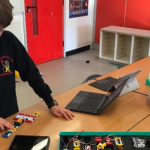This content was last updated on July 8, 2025
Teaching kids fun STEM facts and interesting science facts is a great way to get children excited about science. This offers them an opportunity to obtain brief and memorable information on how the world works and why things are the way they are – from planets to plants, to animals and the human body!
As classrooms evolve, teachers increasingly seek fun, memorable ways to connect students to science. So, we have prepared a list of fun facts about STEM that you can share with your children to astonish them and spark interest in different fields. If you’re looking to inspire scientific thinking through playful, real-world insights:
Fascinating Space Facts!

How can space facts spark student curiosity about the universe?
1. The Milky Way contains 100–400 billion stars; the known universe includes over 170 billion galaxies.
2. The Sun is massive enough to fit 1 million Earths inside it.
3. A plane from the Moon to the Sun would take 20 years to arrive.
4. Venus is the hottest planet at 450°C.
5. Most galaxies have supermassive black holes at their center.
6. A teaspoon of neutron star material weighs 6 billion tons and spins 600 times per second.
7. Neptune completes a full day in just 16 hours.
These facts support STEM inquiry and help students conceptualize scale, distance, and the physics of celestial bodies!
Nature & Earth Science Facts

What everyday natural facts help students connect with Earth systems?
8. Earth is 70% water, with only 11% of its surface usable for habitation.
9. It takes 2 years for a pineapple to fully grow.
10. There are 630 species of carnivorous plants—some live entirely in water!
11. Elephants have the longest pregnancy of any land animal: 22 months.
12. Hummingbirds flap their wings 200 times per second.
13. A teaspoon of healthy soil holds up to 100 million bacteria.
14. If all glaciers melted, sea levels could rise by 82 feet, flooding major cities.
These insights support hands-on learning around ecology, biology, and climate education!
PS: What About AI?
As AI in education transforms how students think and engage, it’s essential to offer resources that blend curiosity with conceptual clarity. Get access to STEM-aligned learning solutions from Twin and make real-world science approachable and active in your classroom!
Amazing Facts About the Human Body

What fun biology facts can enhance student understanding of life sciences?
15. The human body is made up of 50–65% water.
16. Humans share 99% of their DNA with each other and 96% with chimpanzees.
17. An adult human heart weighs 250–300g; a newborn’s heart is about 100g.
18. The human eye can distinguish about 10 million colors.
19. The brain receives 25% of all oxygen in the body.
These help students engage with anatomy and support AI literacy when paired with teacher AI tools that visualize biological systems!
Interesting Facts About Computer Science & Technology

How can tech history fuel excitement for coding and edtech?
20. Electronic computers began in the 1940s. ENIAC (1945) weighed 27 tons.
21. Leonardo da Vinci sketched an early robot in 1495.
22. Alan Turing’s 1936 paper introduced the foundations of modern computing.
23. Moderate video gaming can improve memory, logic, and spatial reasoning.
24. The internet connects global systems via wired and wireless networks.
These are great conversation starters when introducing coding, robotics, and edtech platforms in the classroom!
Facts About Women in STEM

Which pioneering women can inspire future innovators in your class?
25. Sally Ride was the first American woman in space (1983).
26. Margaret Hamilton wrote the code for the Apollo 11 mission.
27. Amelia Earhart completed record-breaking solo flights across oceans.
28. Gladys West developed algorithms that led to GPS technology.
29. Grace Hopper invented COBOL, a foundational computer language.
30. Florence Nightingale reduced death rates during the Crimean War from 42% to 2% using data and hygiene principles.
Incorporating these stories supports gender equity in STEM and introduces role models for diverse learners!
Conclusion: Use Facts to Build Futures
Why should teachers bring short science facts into everyday instruction?
Because well-framed facts open windows to larger concepts. They trigger inquiry, fuel curiosity, and activate cross-disciplinary learning—from astronomy to AI. Get your classroom started today with hands-on AI learning solutions from Twin. Spark discovery. Support STEM. Nurture young minds ready to shape tomorrow.
Start the conversation to explore real-world STEM in your classrooms.
Rachel Turner 🖋️
Content Creator and Educator



